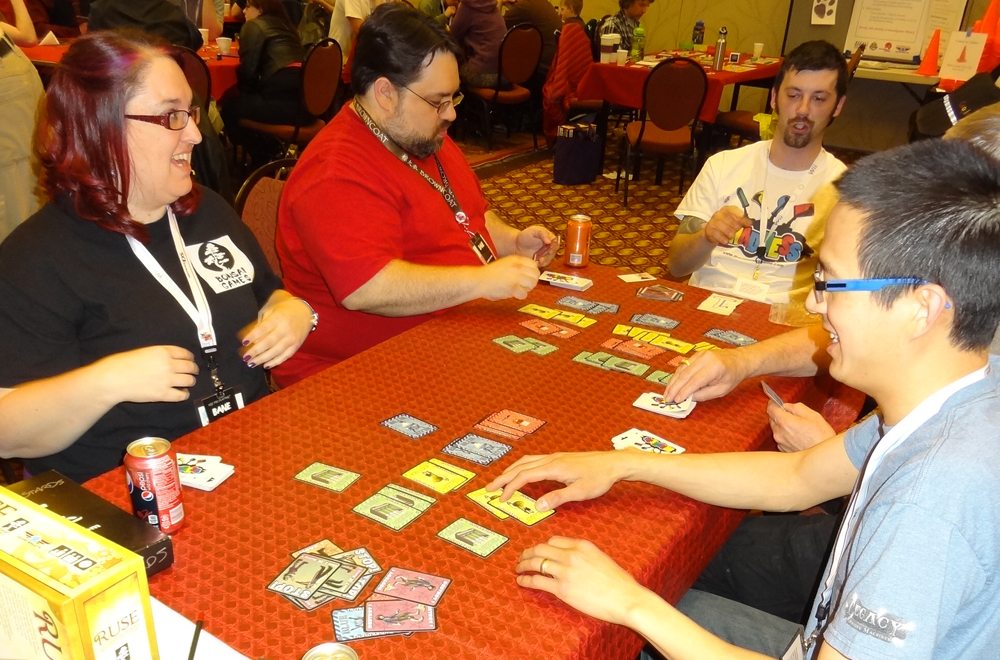
During GameStorm this past weekend, I played something like 25 different games (several of them more than once, even, which isn’t always common for me), so I’ve got a lot to tell you about. Some were old games that have been around for a while, some were so new they aren’t even on Kickstarter yet.
For much of the weekend I just found an empty table, got out my big stack of games to review, and played through as many of them as I could. But I did wander around and join in a couple of games here and there. On Friday night, I walked past the Game Lab, where designers get to run demos of their prototypes, and I met two guys who had just launched their first Kickstarter game, Madness. I tried it out, and then backed it as soon as I got back home.
At a glance: Madness is a fast-paced card game for 2 or 4 players (on teams), ages 13 and up, and plays in under 15 minutes. The pledge level for a copy of the game is $15 (though there are still some early bird slots to get it for $12). While you can play with 4 players with just one Madness deck, getting two and shuffling them together means you can play longer without having to stop to reshuffle. I’d say that the 13 and up is probably higher than it needs to be. The theme does involve zombies and there are a couple of zombie illustrations, but it’s light (more like Zombie Dice rather than Last Night on Earth).
The story is that the Madness virus is spreading, turning people into zombies. Your goal is to find a cure for the Madness, but the virus keeps mutating as you try to find the cure. But even if you don’t care for zombies, don’t worry—this game moves so quickly that you’ll barely even notice them.
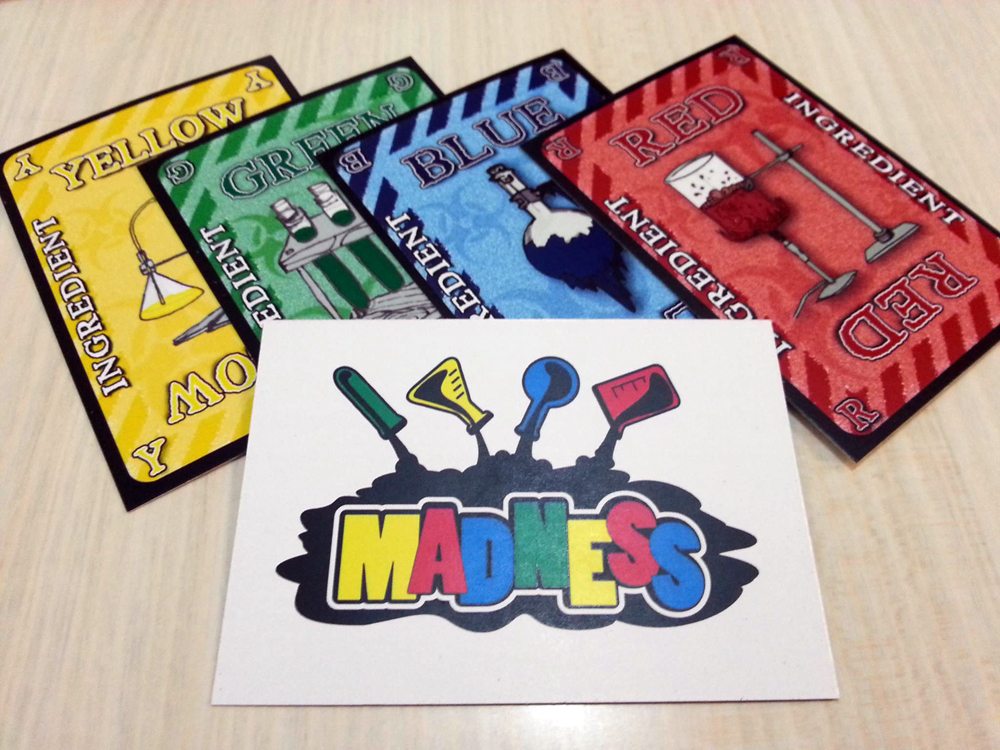
Components:
A big pile of cards. I don’t know exactly how many are in a deck, although it was definitely more than a poker deck—maybe something like 150 to 200 cards. There are two main types of cards: ingredients and actions. The bulk of the cards are the ingredients you see above: four different colors.
The three actions cards are Destroy, Move, and STOP!
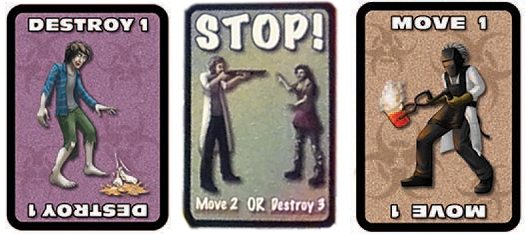
This is also the only place you’ll see zombies: they’re the ones that destroy (discard) cards, and the scientists move cards around.
Personally, I think the game might have broader appeal without the zombie theme, and the graphics and design aren’t the most professional-looking. But the logo is nicely done, and what matters is that you can tell the different cards apart. The ingredient cards do have the colors printed across the top in large letters, with additional letters on the corners, to make it color-blind friendly.
How to play
The goal of the game is to win rounds by matching the Madness formula with your ingredient cards. Best two out of three rounds wins the game.
I’ll explain the 2-player game first. To start, you shuffle the cards and give each player roughly half of them. Each player draws 5 cards, and then any ingredient cards go into the center, making the Madness formula. The cards go in four piles, one for each color, but they should be placed so that you can see how many cards are in each stack.
Then, the players draw back up to 3 cards, and are ready to begin.
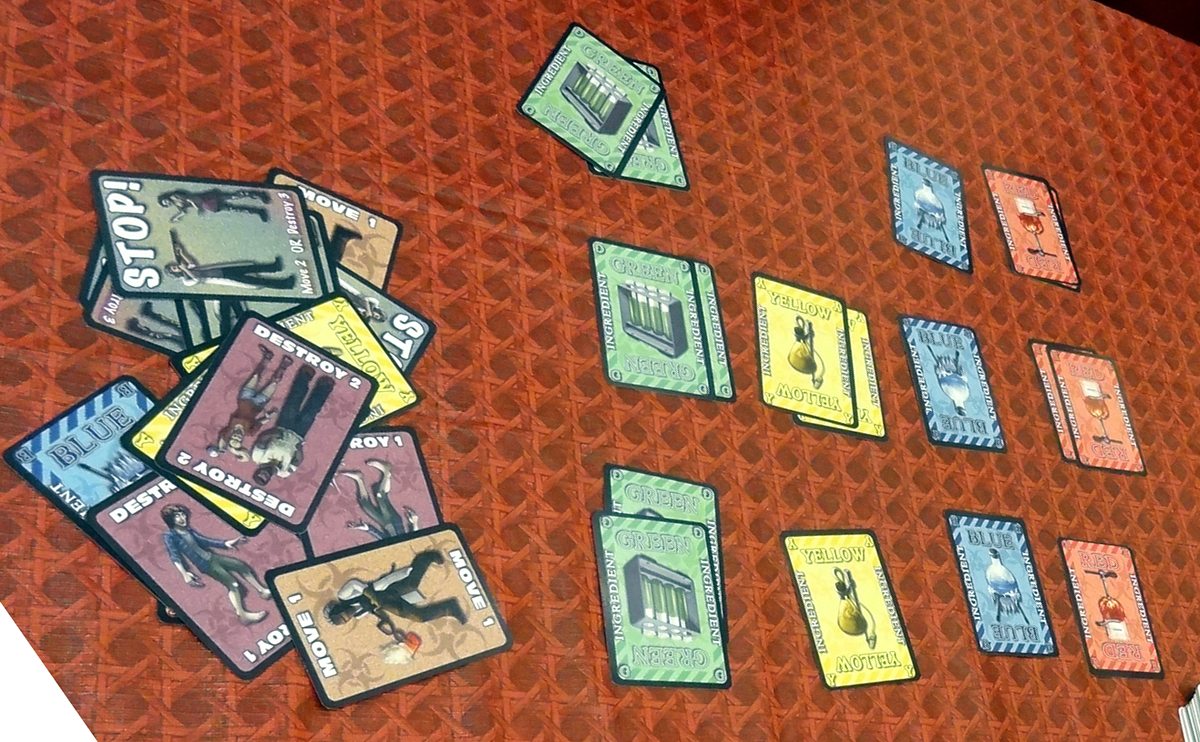
There are no turns in Madness—everyone plays simultaneously, taking actions as quickly as they wish. Your hand limit is three cards—if you have fewer, you may draw cards but you don’t have to. You can play ingredient cards either to the Madness formula in the center row, or to your own formula on your side of the table. Your goal is to get your own formula to match the center, but of course that’s a moving target.
If you play a Destroy card, you may then discard a card (or two, depending on the Destroy card) from anywhere on the table, including your opponent’s formula. The destroyed ingredients and the Destroy card are tossed to the side in a discard pile.
If you play a Move card, you move one or two cards from one formula to another—for instance, moving a green card from the Madness formula into your opponent’s formula.
A STOP! card stops the action—but can be canceled by another STOP! card, and so on. When a STOP! card is played, the only thing the opponent can do is respond with another STOP! card. Whoever plays the last card gets to either move 2 cards or destroy 3 cards, and then call “Go” when they’re ready to start again.
If you run out of cards in your draw pile, that’s an automatic stop to the action. The cards are reshuffled, each player takes half, and then the game starts up again.
Finally, when you think your formula matches the Madness formula, you slap a card face-down on the table and shout “Madness!” The other player must stop playing cards—and you can’t STOP! the Madness. You check to see whether your formula matches the Madness formula—that is, you have the same number of each ingredient. If so, then you win the round. If not, then the opponent wins the round.
All the cards are cleared away except the Madness formula, reshuffled, and a new round starts. When somebody has won two rounds, they win the game.
For a four-player game, you play on teams. There’s still only one formula in the center and one formula per team, but now there are two players playing cards on each formula. You sit next to your teammate, and you each get a stack of cards and a hand limit of three. You can see each other’s cards and discuss strategy a little bit before the action starts, though once things get going then it’s hard to do much planning.

Verdict
Madness is addicting if you like real-time games. In the past few years I’ve discovered that I really love these games that are time-based—either where you’re working against a timer or against other opponents in a free-for-all. While I do enjoy a good, deeply strategic game, there’s something exhilarating about flinging cards or dice around as fast as you can.
Madness is such a simple concept, but it works really well. It reminds me a little of the Looney Labs game Treehouse, where you were trying to get your set of three pyramids to match the “House” set in the middle. In that one, the trick was that sometimes you could manipulate your set and sometimes you could manipulate the House, which changed the goal for everyone. Madness is a bit like playing that, but instead of taking turns changing things, you’re all just making changes as fast as you can.
The ability to move and destroy cards is great, because it gives you strategies like adding extra cards to your opponent’s formula when one color matches the Madness formula, or balancing out your own. The STOP! cards are powerful action cards, but they’re also a chance for you to catch your breath and straighten up the cards a little.
The team game is also a blast, but expect it to result in a lot of chaos. It becomes particularly easy to call “Madness!” when your formula doesn’t match because your teammate is still playing cards and doesn’t realize you were about to stop the game.
I’m really glad I stumbled across Madness at GameStorm, and I’m excited about getting to play this when it’s finished. For more info, check out the Madness Kickstarter page and make a pledge!


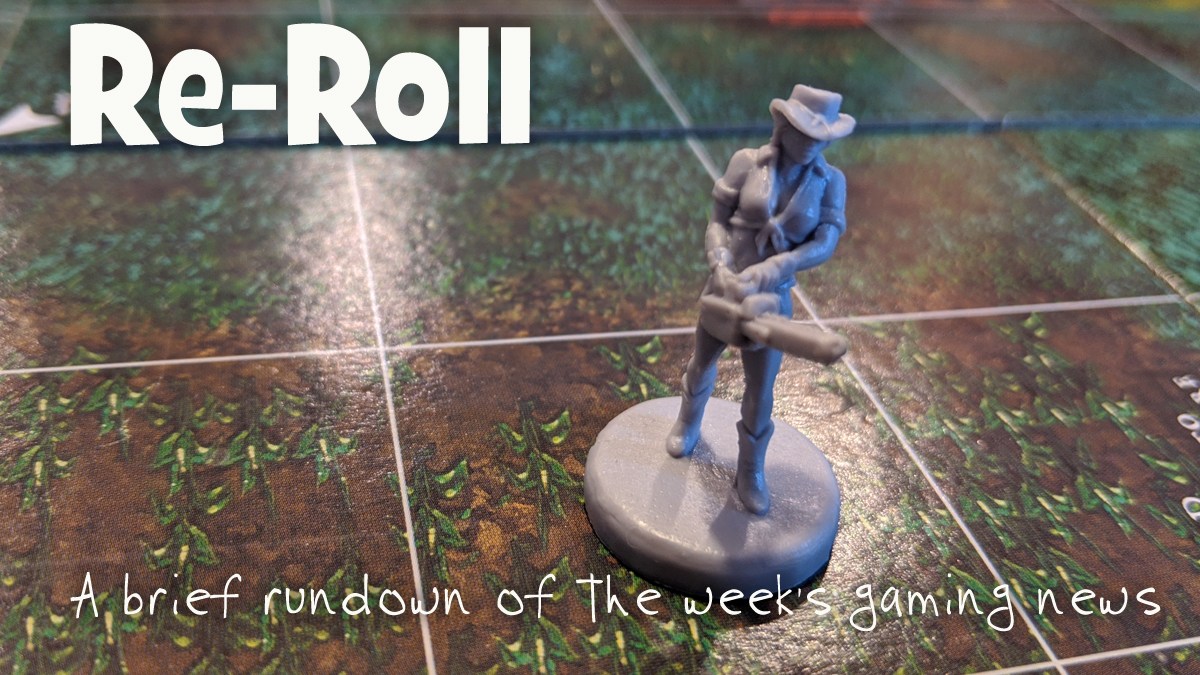

I backed this game on Kickstarter and can’t wait to get a copy! I haven’t played it yet, but it looks really fun! And I think one of the better parts of this project is that is has a pretty turnaround time since it should be delivered in June.
Dear editors,
If you look at the RSS feed at http://geekdad.com/feed/ you will see that the latest story is “Saving Mr. Banks” . Could someone check it out?
Thank you
A little more data, it seems that requesting the RSS feed with MIME type text/html (which is what Pulse does) returns an outdated version of the RSS. Requesting it with application/rss+xml gives the correct up-to-date version
Jonathan, this article was great. Thank you for helping us spread the word about madness. We believe that we have a winner hear and want to spread it to the world. we’re glad you had so much fun playing. Hope to see you at one of our upcoming events.